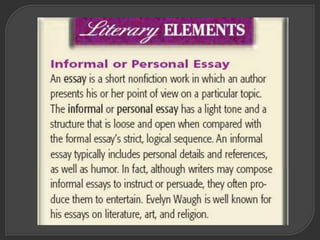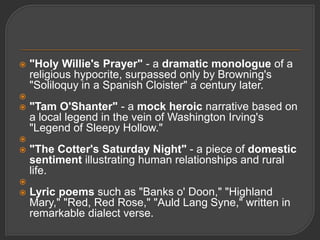The Pre-Romantic period was characterized by a growing appreciation for nature, a focus on emotion and sentimentality through the literature of sensibility, and early interests in humanitarian reform movements. Writers during this time began exploring themes of death, mutability, and melancholy in nature through the Graveyard School of poetry. Additionally, there was a growing democratic attitude and faith in the inherent goodness of human beings.






![John Wood
“The Royal Crescent [Circus]” at Bath, England (1754).](https://image.slidesharecdn.com/neoclassiclit2010-140626065107-phpapp02/85/Neoclassic-lit-2010-7-320.jpg)





















































